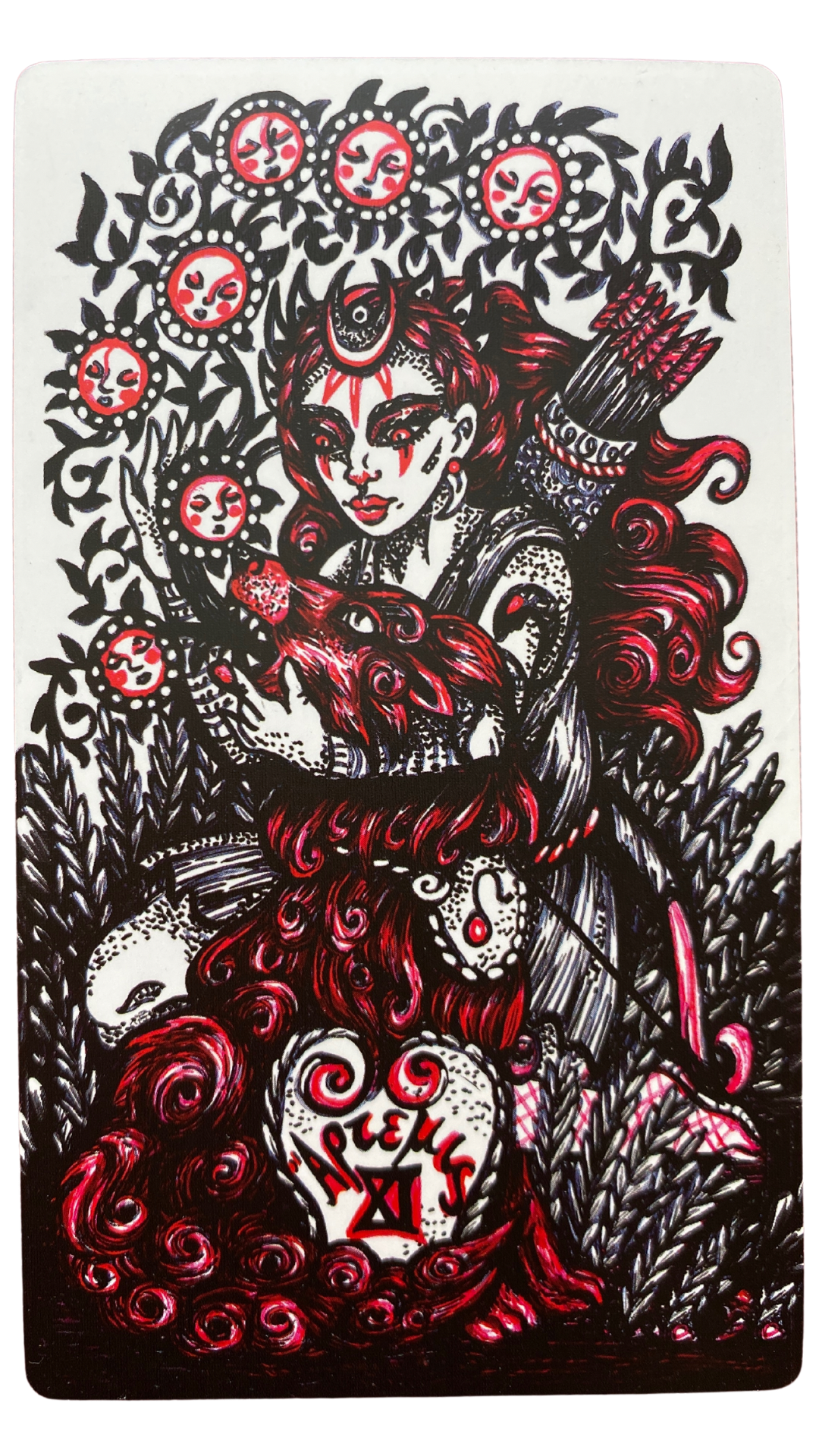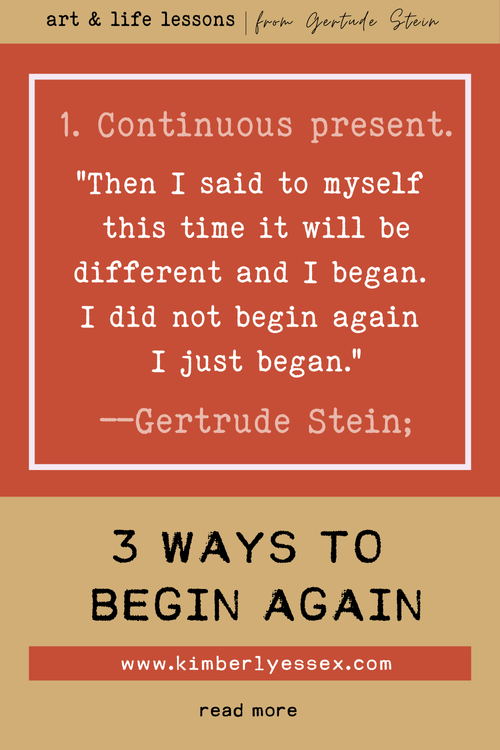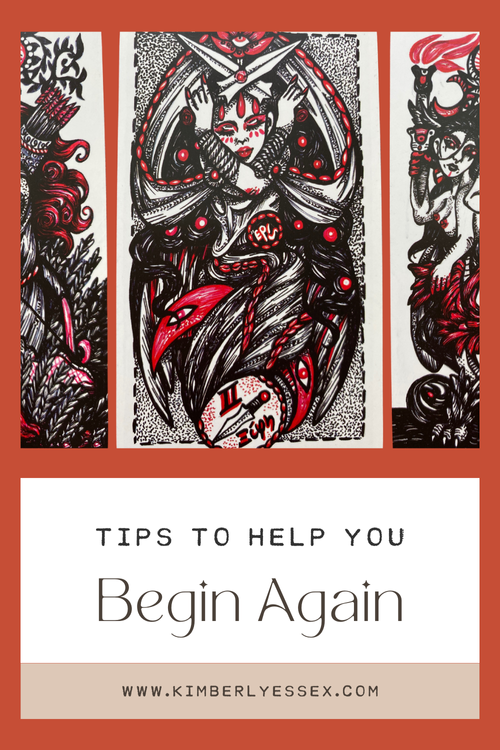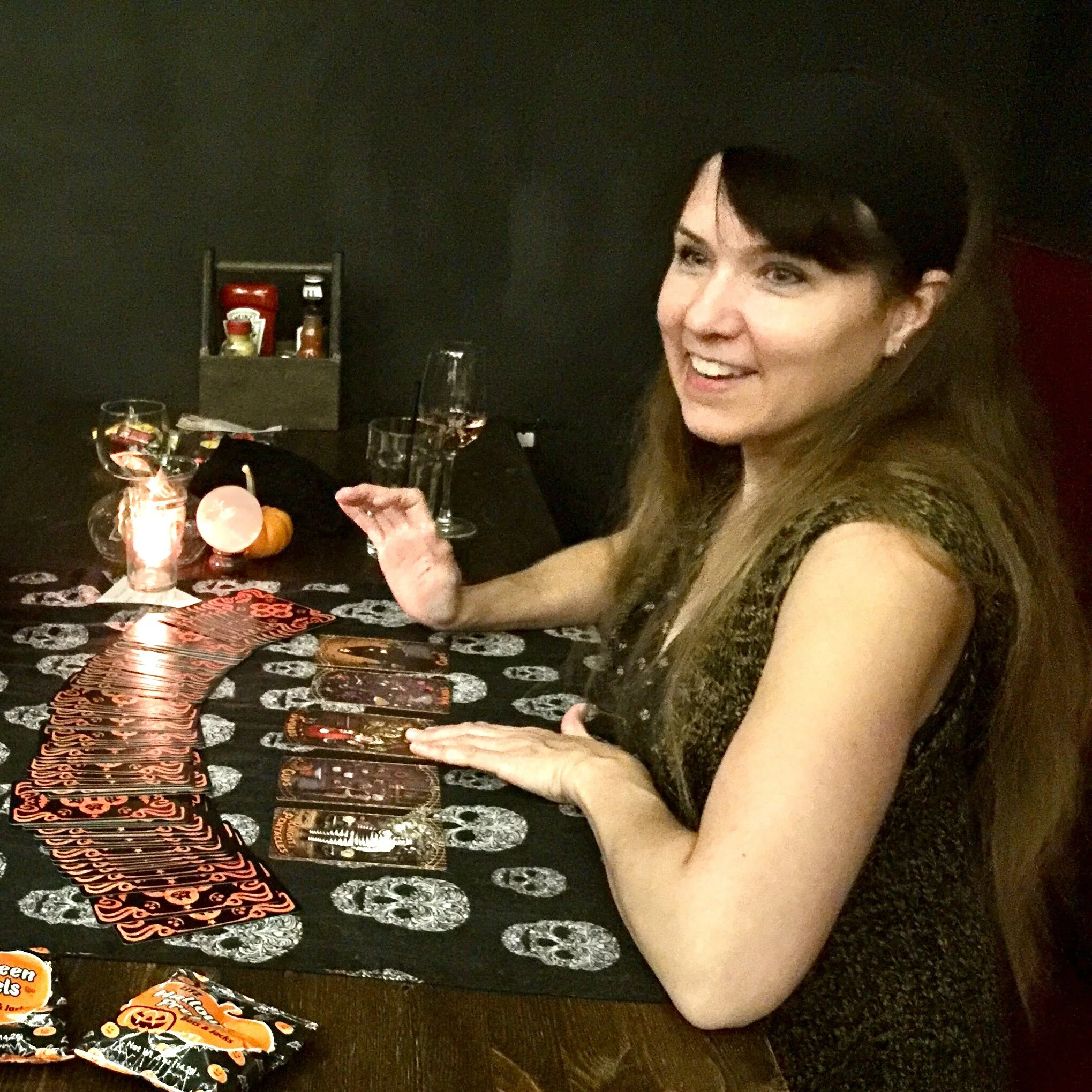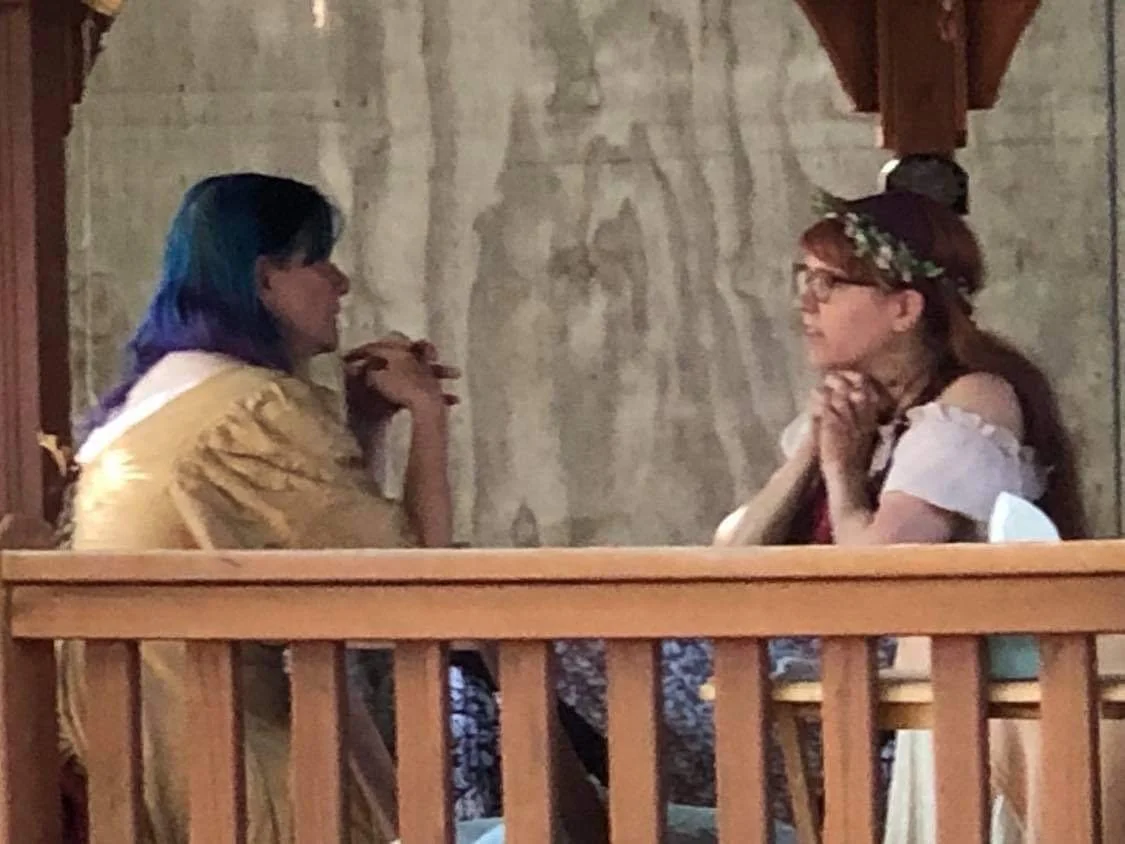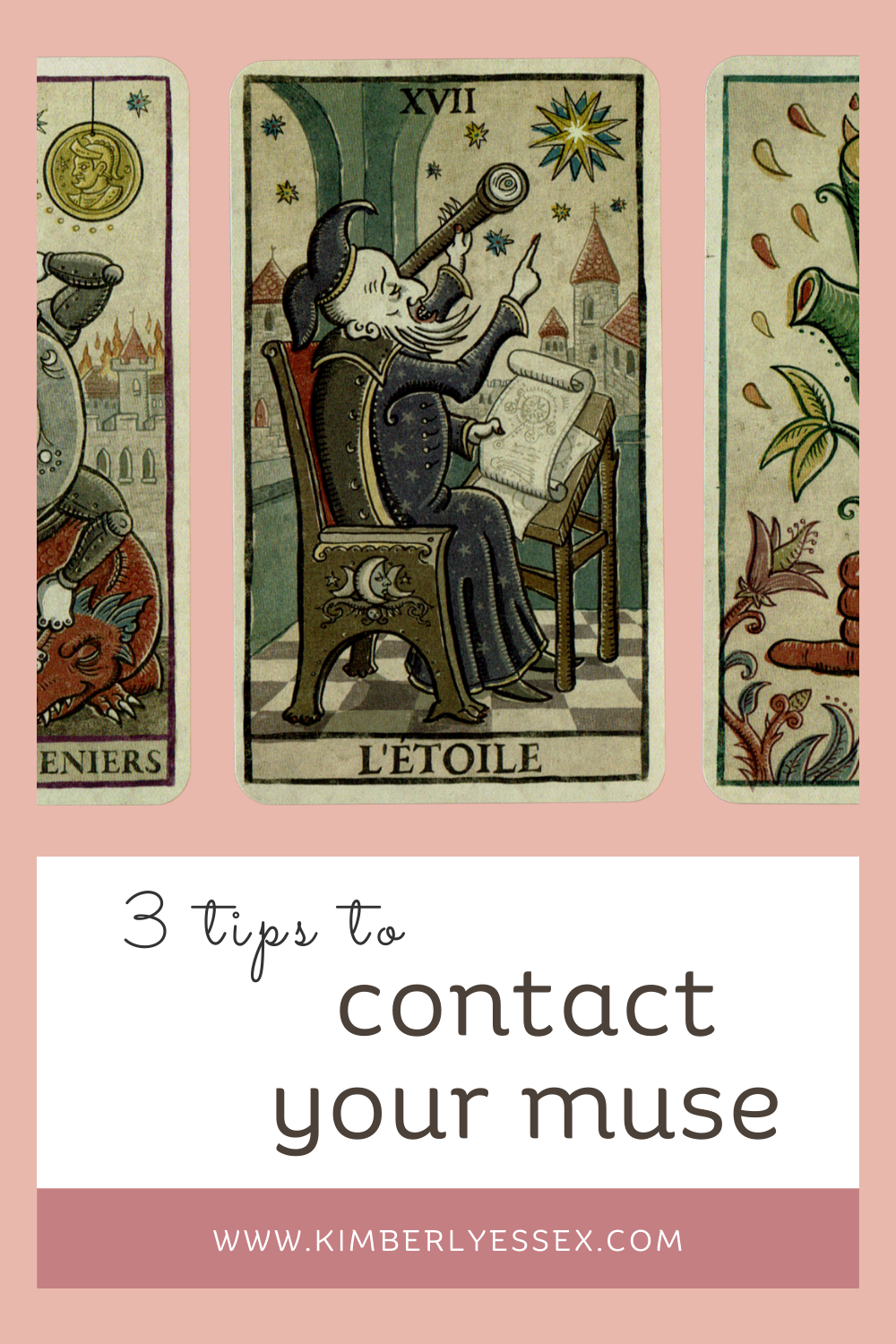Three ways to begin again.
Welcome to this Imbolc Tarot Blog Hop! The theme of this hop is Beginning Again. You can read more about where this topic came from at the “MASTER LIST” link at the top or bottom of this post. Hopefully you have arrived here from Jay Cassels’ entry in this Tarot Blog Hop: Beginning Again. If not, you can check it out afterward by following the “PREVIOUS BLOG” link at the top or bottom of this post.
"Continuous present is one thing and beginning again and again is another thing. These are both things. And then there is using everything."
--Gertrude Stein; Composition as Explanation
I must confess. My choice of the topic for this blog hop, while organically arising from my thoughts about the significance of Imbolc, contains also a small nod to Gertrude Stein. In the excerpt from her essay above, she identifies three approaches that she utilized in her own writing: continuous present, beginning again and again, and using everything. These were methods that very naturally spoke to me when I first shifted my attention from painting to the writing of poetry. If you are unfamiliar with Stein’s work, it may be useful to know that she was a friend of Pablo Picasso and, moved by Picasso’s cubist works, at times referred to her own work as cubist writing.
Although Stein states above that these three methods are different, I would argue that continuous present and using everything are variations on the method of beginning again. I have applied these methods again and again in my creative work as well as in life. I will explore all three here and draw a tarot card for guidance in how we may use each approach at this time of lengthening and brightening of days that precede the Spring.
1. Continuous present.
"Then I said to myself this time it will be different and I began. I did not begin again I just began."
--Gertrude Stein; Composition as Explanation
Gertrude Stein likened the technique of writing in continuous present to list making. If you bring to mind a shopping list as an example, you know when you go to the store that it doesn’t matter in which order you retrieve the items so long as they all end up in your cart. Likewise, when Stein in her novels described a series of events, she intended that everything happened all at once and at the same time and not in a specific order.
Think about how difficult society makes it to change careers. There is much pressure to do next what makes a natural conclusion to all the things you did before. This is societal pressure that in many ways we could ignore more than we do if we’d like to. To take a continuous present approach to life means to free ourselves from our timeline and our story. We can become like the tarot Fool who works from a clean slate, not because the Fool hasn’t filled that slate before, but because they have chosen to drop out of their previous timeline. Free of all that has come before and free to choose a next step that may not have seemed possible if defining oneself by every event that passed before. If you were not you, what would you do next with your life?
The following scene is a personal favorite for illustrating how you can reenter a conversation as if you had not already said what you said before.
As (Jeffrey Wright as) Jean [Basquiat] is seated, Andy [Warhol] and Jack Milo resume conversation.
(Jack Schnabel as) JACK MILO
Nixon lives in Saddle River, New York.(David Bowie as) ANDY WARHOL
Saddle River's in New Jersey.JACK MILO
Saddle River, New York!ANDY WARHOL
It's in New Jersey.JACK MILO
New York.ANDY WARHOL
I think it's in New Jersey.JACK MILO
It's in New York.ANDY WARHOL
Oh, I didn't know that.CLOSE UP: (Jeffrey Wright as) Jean [Basquiat] smiles at Andy's diplomacy.
--from the film Basquiat
In the continuous present approach to life, one recognizes that sticking to one’s story or timeline is a choice and that we may choose something else at any time.
Drawing guidance from the Orphic Tarot, I pulled the Strength card depicting Artemis with a red lion. This confirms for me that there is great strength in an act of diplomacy. It can be difficult to drop one’s story, especially in favor of someone else’s story. But this is what it is to empathize. With proper boundaries, one doesn’t take on the other’s story forever, but just long enough to understand where they are coming from. This is how a strong relationship is built. If you feel frustrated by doing this for someone who is unable to do the same in return, you may take comfort in understanding the one who can drop their own story often has the upper hand.
Orphic Tarot by A.K.A. Skyweb © 2021
2. Beginning again and again.
"Everything is the same except composition and as the composition is different and always going to be different everything is not the same."
--Gertrude Stein; Composition as Explanation
Here, Stein is expressing a “nothing new under the sun” feeling familiar to many creatives, but argues that simply because an activity happens in a new time that that makes the difference. That is, you could do all the same things this year that you did last year, but it will not be the same because of every change that has taken place over that year of time.
Before discovering Stein, the greatest influence on my writing had been the “first thought, best thought” approach espoused by Allen Ginsberg and Jack Kerouac. First thought, best thought helped me to push past my own perfectionism that might have kept me from writing anything at all. The other impact of perfectionism is a tendency to edit the life out of a work of art and Stein’s beginning again approach gave me an answer to that: instead of editing, I would simply begin the writing again, as if for the first time, but with the benefit of what I’d learned from the first attempt.
Another example of beginning again and again is familiar to many tarot readers who read from more that one tarot deck. A tarot deck is a type of Oracle deck that adheres to a specific format. All tarot decks have 78 cards, a major arcana, and a minor arcana divided into four suits. Many tarot decks adhere even more specifically to the style of the Rider Waite Smith tarot deck. The Orphic Tarot seen in this post is one example of a Rider Waite Smith based deck. In fact, I only received the deck a few days before writing this post, but because of the familiar format, I already know much of what I need to know to read it and at the same time it brings a newness to the act of reading the tarot.
Another reason the Orphic Tarot felt like the perfect deck to call in for this topic is the Orpheus myth it is based on. Like many myths, the Orpheus myth has been told again and again in new ways for new times: Jean Cocteau’s Orpheus Trilogy, Marcel Camus’s Black Orpheus, Philip Glass’s opera Orphée, and so on.
In the beginning again and again approach to life, one choses to be the same person, to repeat the same actions, again and again, with the understanding that one is not the same person year after year and repeated actions are not quite the same.
Drawing guidance from the Orphic Tarot, I pulled the Two of Swords depicting Eris, the goddess of discord, strife, and rivalry. This card speaks to me of the perfectionism I just described that can keep the painter from painting, the writer from writing, or any person from moving forward with their life due to difficulty in making a decision. Often the way to get moving again is simply to do what is already familiar to you. Maybe do two things together that are familiar to you but that you have never done together before and this will automatically create a new thing, a new story.
Orphic Tarot by A.K.A. Skyweb © 2021
3. Using everything.
“In my beginning it was a continuous present a beginning again and again and again and again, it was a series it was a list it was a similarity and everything different it was a distribution and an equilibration."
--Gertrude Stein; Composition as Explanation
As a life long perfectionist, I have never been prolific in either painting or writing. Therefore, it was a happy discovery that the beginning again and again editing process described above sometimes resulted simply in more poems. Below are two poems of four that resulted from a beginning again and again editing process in which I decided to keep all four.
an excerpt from about the twentieth lover, a chapbook by kim essex © 2000
an excerpt from about the twentieth lover, a chapbook by kim essex © 2000
It may be difficult to distinguish how one of these is a rewrite of the other, so I will explain. In the time that I worked on the writing for about the twentieth lover, I’d had about six or eight oversize tarot cards from the Blake Tarot Major Arcana deck displayed in my workspace. The cards had not been drawn with the intention of reading them but only to serve as inspiration. Eventually, it came to mind that the images may be influencing my writing and the topic of my writing subconsciously and so I decided to explore that deliberately by writing from them. Each time I began again, I wrote not from the previous writing but from the same cards the previous writing had also been drawn from only each time with the experience of the previous writings behind me. In the end, I’d accumulated four separate poems and decided to use everything.
In the using everything approach to life, one does not drop one’s history but instead uses all of it. Maybe the next step you’d like to take this year doesn’t flow linearly from the steps you took last year but makes perfect sense if one considers how naturally you took to piano at the age of ten or how much you knew about parakeets at the age of eight. (Insert your own talents and propensities here.)
Lastly, I'll pass on a tip given to me by my poetry teacher Anne Waldman upon selling her archives: “Keep everything--they pay by the foot!”
Drawing guidance from the Orphic Tarot, I pulled the Wheel card depicting the triple goddess aspect of Hecate. The Wheel card in the tarot reminds us that what is up will again come down and what is down will again come up. It could be your mood, your bank balance, your relationships--so much in life is of the nature to ebb and flow. It is not the coming down that causes pain, but the failure to recognize and accept the nature of impermanence. Rejoice--this cycle is a reminder that you are alive for only what is dead is unchanging. And if you are a creative, especially, use everything!
Orphic Tarot by A.K.A. Skyweb © 2021
Thank you for reading. If you’ve gained anything of value here, please leave a comment. I would love to know what that was for you!
xo
kim
PREVIOUS BLOG | MASTER LIST | NEXT BLOG
Thank you for stopping by and I hope you are enjoying this Imbolc Tarot Blog Hop on Beginning Again. Much love and thanks to Jay Cassels who gently encouraged me to put this blog hop together. ♥ Please continue on to Joy Vernon’s post by following the “NEXT BLOG” link at the top or bottom of this post.
Subscribe
Sign up with your email address to receive news and updates.
Looking for something?
Search the blog index here:
-
archive
- Aug 1, 2023 Where are am I going; a Chariot and Tarot Knights tarot spread.
- Jun 21, 2023 Transitions; mapping a path forward.
- Jun 4, 2023 How to be your own best friend; a Two of Cups tarot spread.
- May 1, 2023 Love me better; a tarot spread.
- Mar 20, 2023 Downloading the muse.
- Feb 1, 2023 Three ways to begin again.
- Dec 21, 2022 Looking back at a year ahead tarot spread.
- Oct 31, 2022 Connecting with an ancestor through the Dali Tarot.
- Jun 20, 2022 How to tell time with the tarot.
- Jun 20, 2022 Magick Lesson: How to be cozy in your skin.
- Jun 20, 2022 Talking to spirit with tarot.
- Jun 20, 2022 A meditation for Mabon.
- Jun 20, 2022 The Devil’s Spectrum; a tarot spread.
- Jun 19, 2022 Tarot Deck Interview: Triomphes de la Lune

